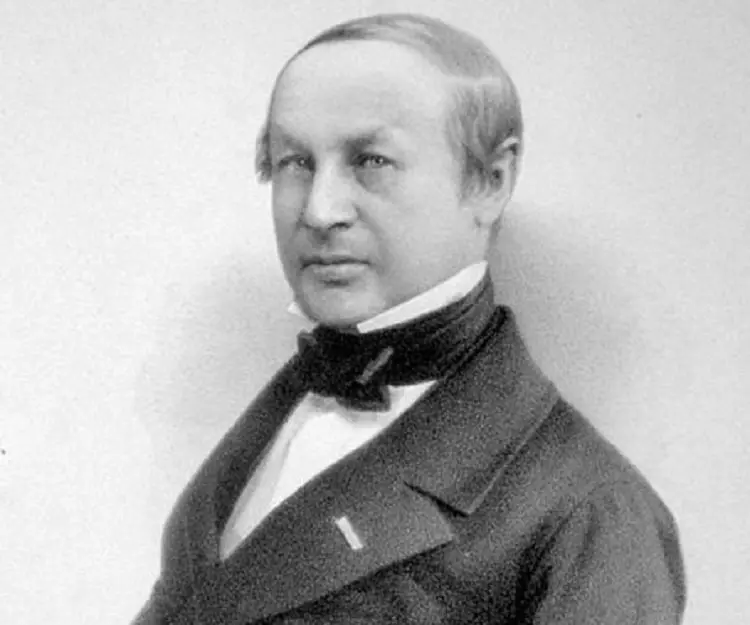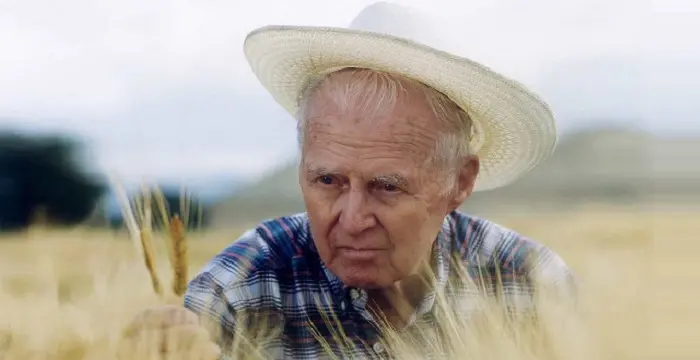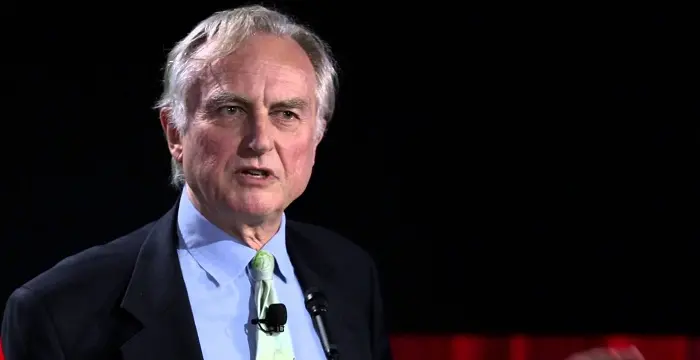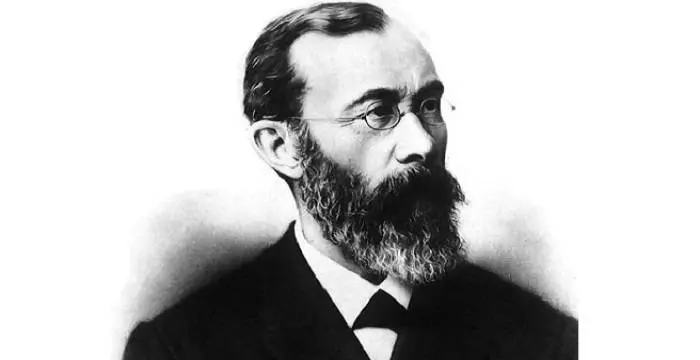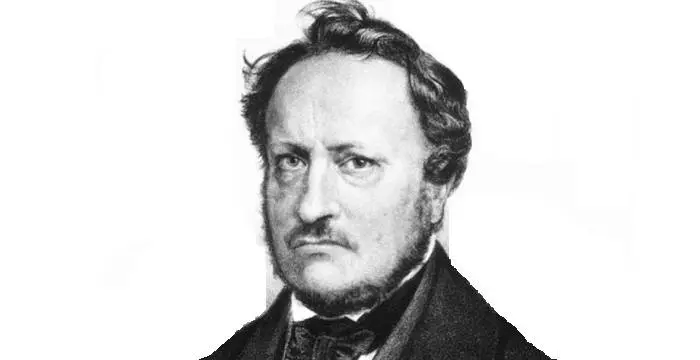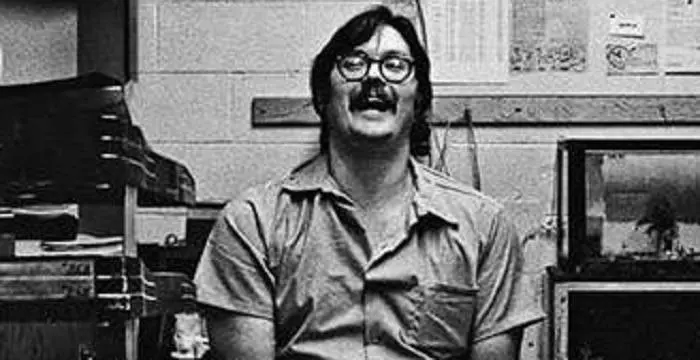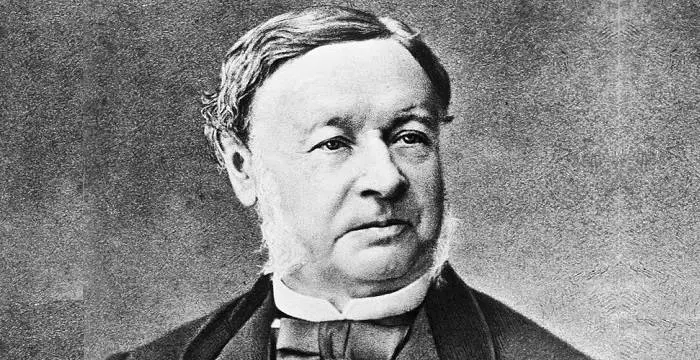
Theodor Schwann - Scientists, Facts and Family
Theodor Schwann's Personal Details
Theodor Schwann was a German physiologist who discovered the Schwann cells in the peripheral nervous system
| Information | Detail |
|---|---|
| Birthday | December 7, 1810 |
| Died on | January 11, 1882 |
| Nationality | German |
| Famous | Scientists, Biologists, Physiologists |
| Siblings | L. Schwann |
| Birth Place | Neuss, Germany |
| Gender | Male |
| Sun Sign | Sagittarius |
| Born in | Neuss, Germany |
| Famous as | Physiologist |
| Died at Age | 71 |
// Famous Scientists
Juliane Koepcke
Juliane Koepcke is a German-Peruvian biologist, who was the lone survivor among the 92 passengers and crew of the ill-fated LANSA Flight 508 that crashed in the Peruvian rainforest on 24 December 1971. Know more about her life in this biography.
Henry Cavendish
Henry Cavendish was a theoretical chemist and physicist, renowned for discovery of hydrogen and calculation of the mass of earth. To know more about his childhood, profile, timeline and career read on
Konstantin Tsiolkovsky
Konstantin Tsiolkovsky was a Russian rocket scientist and a pioneer of astronautics. This biography provides detailed information about his childhood, family, personal life, career, achievements, etc.
Theodor Schwann's photo
Who is Theodor Schwann?
Theodor Schwann was a German physiologist who made major contributions to the development of cell theory and discovered the Schwann cells in the peripheral nervous system. He is also credited to have coined the term metabolism. The son of a goldsmith, he studied at the Jesuits’ College at Cologne before attending the University of Bonn and then the University of Würzburg. After graduating with a medical degree from the University of Berlin, he began working under the prominent physiologist Johannes Peter Muller. The young man was greatly influenced by Muller who was at that time preparing his seminal book on physiology. Schwann helped his mentor in research work and made significant discoveries regarding the nervous and muscular tissues. Eventually Schwann embarked on an academic career and accepted an appointment as professor of anatomy at the Catholic University of Leuven where he continued his research. Over the course of his work he examined the question of spontaneous generation and became one of the first individuals to contribute to the germ theory of alcoholic fermentation. His contribution to the understanding and classification of adult animal tissues was also noteworthy. During his later years he became increasingly concerned with theological issues.
// Famous Biologists
Juliane Koepcke
Juliane Koepcke is a German-Peruvian biologist, who was the lone survivor among the 92 passengers and crew of the ill-fated LANSA Flight 508 that crashed in the Peruvian rainforest on 24 December 1971. Know more about her life in this biography.
Norman Borlaug
Norman Borlaug was an American biologist known as the “Father of the Green Revolution”. This biography of Norman Borlaug provides detailed information about his childhood, life, achievements, works & timeline.
Richard Dawkins
Richard Dawkins is an English ethologist and evolutionary biologist. This biography of Richard Dawkins provides detailed information about his childhood, life, achievements, works & timeline.
Childhood & Early Life
Theodor Schwann was born on 7 December 1810, at Neuss near Düsseldorf, as the fourth son of Elisabeth Rottels and her husband Leonard Schwann. His father was a goldsmith who later became a printer.
He first went to the Jesuits College in Cologne, and then to Bonn in 1829 where he met the prominent physiologist Johannes Peter Muller. He then proceeded to the University of Würzburg for his medical studies and continued his training at the University of Berlin from where he graduated with a medical degree in 1834. His doctoral dissertation was regarding the respiration of the chick embryo.
Career
At Berlin, Theodor Schwann once again came in contact with Muller who convinced the young man to venture into research. Muller was at that time working on a major book on physiology and Schwann helped him in his research for the project.
He experimented by observing animal cells under the microscope and was particularly fascinated by the nervous and muscular tissues. Over the course of his investigations he came across the cells which envelope the nerve fibers, now called Schwann cells in his honor.
He made extracts from the stomach lining of animals, and discovered that a factor other than hydrochloric acid was instrumental in digestion. Following further research in the area, he successfully isolated the active principle—which he named pepsin—in 1836.
During the 1830s, he performed a series of experiments to determine if the concept of spontaneous generation was true or false. He exposed sterilized broth only to heated air in a glass tube and observed that no micro-organisms were detectable. This convinced him that the idea of spontaneous generation was false.
Around this period, he identified the role that micro-organisms played in alcohol fermentation and putrefaction. Following intensive experimentation he theorized that yeast originated the chemical process of fermentation. However, it was not until over a decade later that his explanation of fermentation was accepted by other scientists.
In 1838, one of his friends, the botanist Matthias Schleiden, published an article discussing the structure and origin of plant cells and theorized that all plant cells share a common structure and that new plant cells form from the nuclei of old plant cells. This article made Schwann wonder if this could be true for animal cells as well.
He shared his ideas with Schleiden and they jointly began investigating the similarities between plant cells and animal cells. Their research on animal tissues led them to formulate the cell theory which was summarized in Schwann's book ‘Microscopic Investigations on the Accordance in the Structure and Growth of Plants and Animals’ in 1839.
Schwann became chair of anatomy at the Belgian Catholic University of Leuven in 1839. He was a dedicated professor, much loved by his students. In 1848, he became professor of anatomy at the University of Liege where he worked on a human respirator for environments where the surroundings are not breathable.
Major Works
He discovered the Schwann cells, a variety of glial cell that keep peripheral nerve fibers (both myelinated and unmyelinated) alive. The cells are involved in many important aspects of peripheral nerve biology.
Schwann along with Matthias Schleiden is credited to have given the cell theory which describes the properties of cells. His theory that along with plants, animals are also composed of cells or the product of cells in their structures was a major advancement in the field of biology since little was known about animal structure up to the mid-19th century.
Awards & Achievements
He was awarded the Copley medal in 1845 for his physiological researches on the development of animal and vegetable textures.
In 1879, Schwann was elected to the Royal Society and also to the French Academy of Science.
Personal Life & Legacy
Theodor Schwann was a very simple man who stayed away from scientific controversies and petty rivalries that are common in the scientific fraternity. He was much loved and respected by his students. He never married.
He died on 11 January 1882, in Cologne, Germany, at the age of 71.
// Famous Physiologists
Wilhelm Wundt
Wilhelm Wundt was a renowned doctor who conducted pioneering studies on experimental psychology. To know more about his childhood, career, profile and timeline read on
Charles Best
Charles Best was a great scientist and a renowned physiologist who is remembered for being the co-discoverer of insulin. Read this biography to learn about his profile, childhood, life and timeline.
Johannes Peter Müller
Johannes Peter Müller was a German physiologist and comparative anatomist. Check out this biography to know about his childhood, life, achievements, works & timeline.
Theodor Schwann's awards
| Year | Name | Award |
|---|---|---|
Other | ||
| 0 | Copley Medal | |
Theodor Schwann biography timelines
- // 7th Dec 1810Theodor Schwann was born on 7 December 1810, at Neuss near Düsseldorf, as the fourth son of Elisabeth Rottels and her husband Leonard Schwann. His father was a goldsmith who later became a printer.
- // 1829 To 1834He first went to the Jesuits College in Cologne, and then to Bonn in 1829 where he met the prominent physiologist Johannes Peter Muller. He then proceeded to the University of Würzburg for his medical studies and continued his training at the University of Berlin from where he graduated with a medical degree in 1834. His doctoral dissertation was regarding the respiration of the chick embryo.
- // 1836He made extracts from the stomach lining of animals, and discovered that a factor other than hydrochloric acid was instrumental in digestion. Following further research in the area, he successfully isolated the active principle—which he named pepsin—in 1836.
- // 1838In 1838, one of his friends, the botanist Matthias Schleiden, published an article discussing the structure and origin of plant cells and theorized that all plant cells share a common structure and that new plant cells form from the nuclei of old plant cells. This article made Schwann wonder if this could be true for animal cells as well.
- // 1839He shared his ideas with Schleiden and they jointly began investigating the similarities between plant cells and animal cells. Their research on animal tissues led them to formulate the cell theory which was summarized in Schwann's book ‘Microscopic Investigations on the Accordance in the Structure and Growth of Plants and Animals’ in 1839.
- // 1839 To 1848Schwann became chair of anatomy at the Belgian Catholic University of Leuven in 1839. He was a dedicated professor, much loved by his students. In 1848, he became professor of anatomy at the University of Liege where he worked on a human respirator for environments where the surroundings are not breathable.
- // 1845He was awarded the Copley medal in 1845 for his physiological researches on the development of animal and vegetable textures.
- // 1879In 1879, Schwann was elected to the Royal Society and also to the French Academy of Science.
- // 11th Jan 1882He died on 11 January 1882, in Cologne, Germany, at the age of 71.
// Famous Sagittarius Celebrities peoples
Billie Eilish
Billie Eilish Pirate Baird O’Connell is an American singer and songwriter. Check out this biography to know about her childhood, family, personal life, birthday, etc.
Jacelyn Reeves
Jacelyn Reeves is a former flight attendant who once had a fling with Clint Eastwood. Check out this biography to know about her birthday, childhood, family life, achievements and fun facts about her.
Edmund Kemper
Edmund Kemper is a convicted serial killer from America who murdered ten people. Check out this biography to know about his childhood, life, crimes and other facts about him.
Pietro Boselli
Pietro Boselli is an Italian model, engineer, teacher, and fitness athlete who became famous as the ‘world’s sexiest math teacher’. Check out this biography to know about his birthday, childhood, family life, achievements and fun facts about him.
Niqoles Heard
Lil Niqo is an American rapper and musical artist. Let’s take a look at his family and personal life including age, date of birth, net worth, girlfriends, and fun facts.
Ted Nugent
Ted Nugent is a hard rock musician known for his hits ‘Stranglehold’ and ‘Cat Scratch Fever’. This biography of Ted Nugent provides detailed information about his childhood, life, achievements, works & timeline.
Theodor Schwann's FAQ
What is Theodor Schwann birthday?
Theodor Schwann was born at 1810-12-07
When was Theodor Schwann died?
Theodor Schwann was died at 1882-01-11
Which age was Theodor Schwann died?
Theodor Schwann was died at age 71
Where is Theodor Schwann's birth place?
Theodor Schwann was born in Neuss, Germany
What is Theodor Schwann nationalities?
Theodor Schwann's nationalities is German
Who is Theodor Schwann siblings?
Theodor Schwann's siblings is L. Schwann
What is Theodor Schwann's sun sign?
Theodor Schwann is Sagittarius
How famous is Theodor Schwann?
Theodor Schwann is famouse as Physiologist



